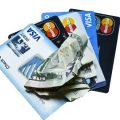The Philippines is one of the world’s early movers when it comes to digital payments. In fact, the country already launched mobile money solutions in 2001. Still, Filipinos didn’t immediately warm up to the idea and only about 10% of payments were made electronically by 2018.
Due to COVID-19, however, more and more Filipinos have been embracing contactless payments. While quarantine measures have slowly eased, the public is still required to practice physical distancing and other safety precautions. As such, there has been a shift toward using contactless payment solutions to help reduce the spread of germs.
Currently, there are two common forms of contactless payment solutions in the Philippines: digital wallets and credit or debit cards. Still, there are also other ways to ease yourself into using contactless payment methods after being used to cash-based transactions. Below is a more in-depth look at some of these options:
E-Wallets and Payment Apps
Digital or e-wallets are software-based systems that store a user’s payment and account information. They are also often called mobile wallets or mobile payment solutions, since these e-wallets or apps are often used through mobile devices such as smartphones or tablets.
This method of contactless payment has seen an increase not just in the number of users but also the number of transactions. After all, these apps can be used for multiple functions such as sending money, paying bills, and buying prepaid or mobile data credits.
There are e-wallets that have a QR code feature, which allows users to scan a store’s QR code in order to make a payment. In addition, some e-wallets can be linked to a physical card. If the store doesn’t have a QR code for scanning, the customer can still use a contactless payment method through the e-wallet card.
Credit and Debit Cards
Many Filipinos don’t realize that they are already using contactless payment when using their credit cards when paying for purchases. This method requires minimal physical contact because the card and card terminal need to be passed from customer to cashier. However, for all intents and purposes, credit cards can be classified as contactless payment solutions.
For those who don’t have credit cards, debit cards offer the same functionality. Many employees have payroll accounts connected to debit cards, which are immediately usable for contactless payments. It can even be argued that debit cards are preferable because there’s less risk of overspending.
NFC Payments
NFC stands for near field communication. It’s a communication method that creates a low-speed connection between two devices in order to exchange data. In the case of contactless payments, these two devices are usually a mobile phone and a reader. NFC is the technology behind mobile wallets such as Apple Pay and Android pay.
There are three methods where NFC technology can be applied for contactless payment solutions. The above-mentioned is called peer-to-peer, referring to the two NFC-enabled devices. The second one is card emulation, where one NFC device can be used as a contactless card. The last one is called read/write, where an NFC device acquires data from another device that doesn’t have the capacity to interpret the data.
Contactless Cards
Contactless cards are a combination of NFC technology and credit or debit cards. Instead of inserting or swiping the card into a terminal, the customer has to wave or tap the card over a reader. This is a much faster option and also requires even less physical contact.
Do note that not all banks and payment solutions providers have contactless cards as of the moment. Some of the biggest banks, such as BPI, HSBC, and Metrobank, however, already have contactless credit cards. To know if the card you have is enabled for this function, check its front or back. You should be able to see an icon that looks like a sideways Wi-Fi or soundwave.
Online Shopping
Obviously, online shopping isn’t a contactless payment method. However, e-commerce is one of the most popular shopping methods where you can get used to the concept of contactless payments. In fact, it’s not just contactless payments that e-commerce espouses but also (and more importantly) virtually contactless shopping.
Some of the payment methods you can choose when you shop online include online bank transfer, e-wallets, and credit cards. There are also online marketplaces where they encourage shoppers to buy in-platform currency or credits. These often come with rewards, such as surprise discounts or exclusive access to promos.
Some Filipinos are still wary of using contactless payments. There’s a certain level of confidence about being able to touch the money you are using to pay. In some ways, it feels more “real.” However, it can’t be denied that contactless payments are faster and safer. They are also more secure.
With more people appreciating the benefits of contactless payments, especially with the effects of COVID-19 to the economy, it won’t be long until it becomes the norm.





